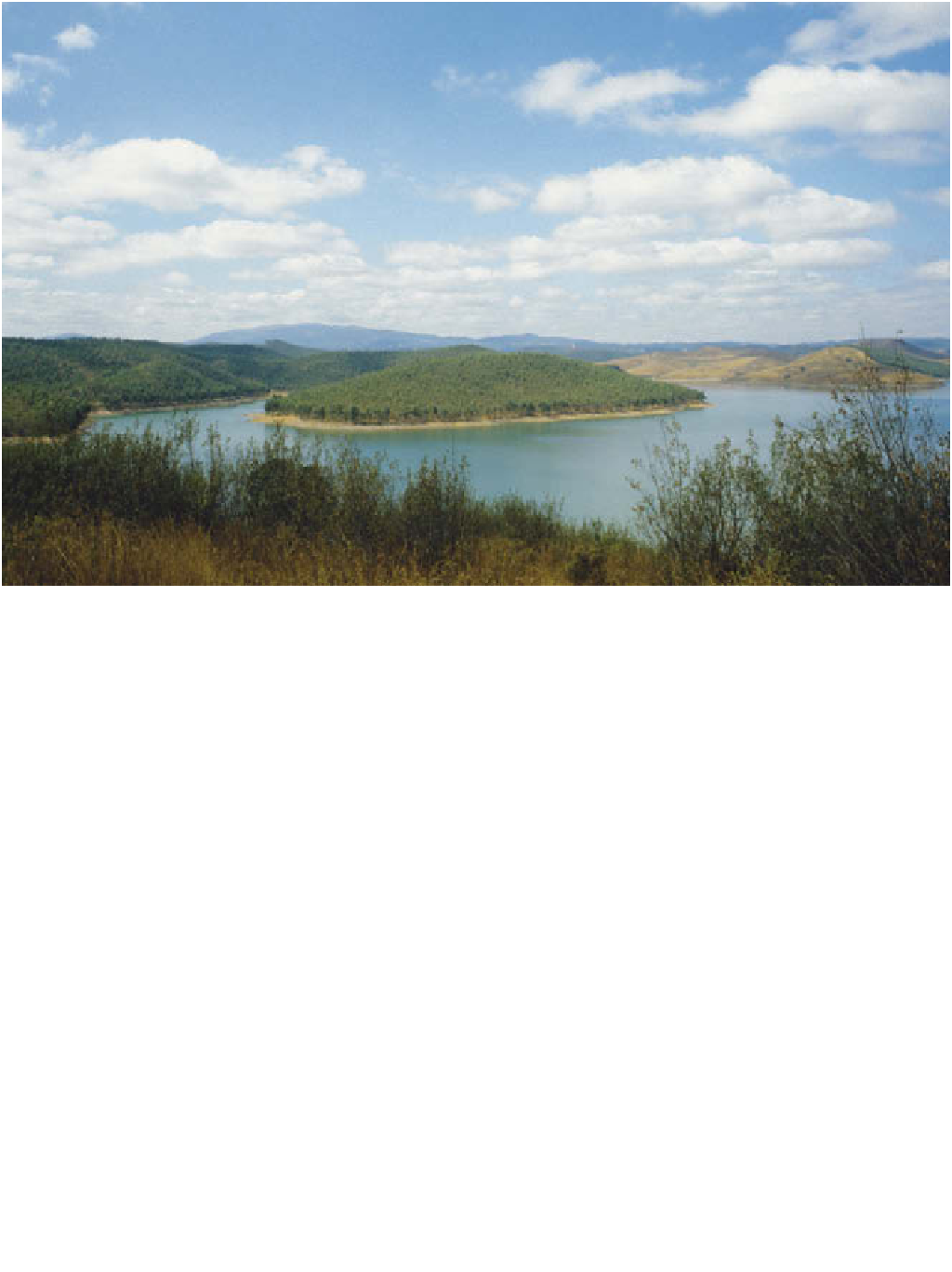Geoscience Reference
In-Depth Information
Plate 4.6
Fair-weather cumulus cloud in southern Portugal. Notice the lack of any vertical development of the cloud, which is
capped by an inversion of temperature.
Photo: Peter Smithson
As the ice crystals sink into lower layers of the cloud
where temperatures are only just below freezing, they
have a tendency to stick together to form snowflakes. This
is brought about by the supercooled droplets of water in
the cloud acting as an adhesive. After the snowflakes have
melted the resulting drops may grow further by collision
with cloud droplets before they reach the ground as rain.
This method of producing raindrops is known as the
Bergeron-Findeisen process
, after the developers of the
theory (
Figure 4.8
).
Beneath the base of the cloud,
however, evaporation will take place in the drier air and
if the drop is small it may be evaporated completely.
Precipitation formation both by collision and
coalescence and by the Bergeron-Findeisen process
undoubtedly occurs in the atmosphere, though the
Bergeron-Findeisen process can operate only when cloud
temperatures are well below freezing. The rate at which
vapour is converted into water droplets and precipitation
depends upon three main factors: the rate of coalescence
and ice crystal growth; the cloud thickness; and the
strength of the updraughts in the cloud. The total amount
of rain will be determined by the life span of the cloud,
the height of the cloud above the ground and how long
oiled slide and photographed under a microscope in the
aircraft. The largest droplet has a diameter of about 30
m.
Photo: B. J. Mason











































